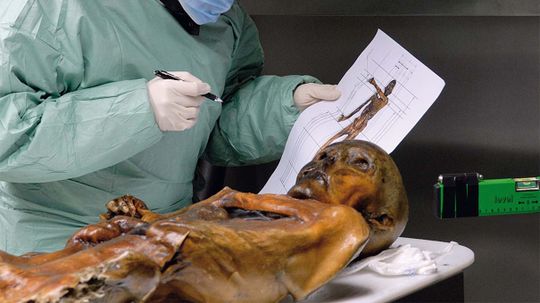Unveiling the dietary secrets of ancient civilizations has always been a tantalizing endeavor for archaeologists. In a groundbreaking discovery, researchers have now shed light on the final meal consumed by Otzi the Iceman, an iconic figure from our distant past. Prepare to be astounded as we delve into the depths of this extraordinary find.
A Glimpse into Ancient Culinary Habits
Intriguingly, recent analysis conducted on Otzi’s stomach contents has revealed an unexpected twist in his diet. Contrary to popular belief that early humans subsisted primarily on lean meats and plant-based foods, it appears that our ice-bound friend indulged in a high-fat feast before meeting his untimely demise.
Through meticulous examination using state-of-the-art techniques, scientists identified traces of both animal and plant remains within Otzi’s digestive system. The presence of fatty acids derived from red deer meat suggests that he relished a succulent portion just hours prior to his fateful encounter with destiny.
This revelation challenges preconceived notions about ancient eating habits and provides valuable insights into how our ancestors adapted their diets according to availability and environmental conditions. It also raises intriguing questions about the role fat played in their overall health and well-being.
An Unlikely Menu Fit for Royalty
Further investigation uncovered additional components comprising Otzi’s last supper – wild goat meat seasoned with herbs such as bracken fern and mosses commonly found in alpine regions during that era. These findings hint at sophisticated culinary practices among early humans, showcasing their resourcefulness when it came to flavoring their meals with locally available ingredients.
The inclusion of cereals like einkorn wheat further highlights the diverse range of foods consumed by Otzi. This revelation challenges the notion that early humans solely relied on hunting and gathering, suggesting a more complex dietary landscape.
By piecing together these culinary fragments, scientists are not only reconstructing ancient menus but also gaining valuable insights into our ancestors’ nutritional choices and their ability to adapt to different environments.
A Glimmer of Understanding
The discovery of Otzi’s high-fat last meal opens up a Pandora’s box of possibilities for researchers seeking to understand the intricate relationship between diet, health, and human evolution. It prompts us to question how our own eating habits have evolved over time and whether we can draw any parallels with those who came before us.
As we continue unearthing relics from our past, each new piece of evidence adds another layer to the tapestry that is human history. The story behind Otzi’s final feast serves as a reminder that even in death, he has left an indelible mark on our understanding of ourselves – one mouthful at a time.




